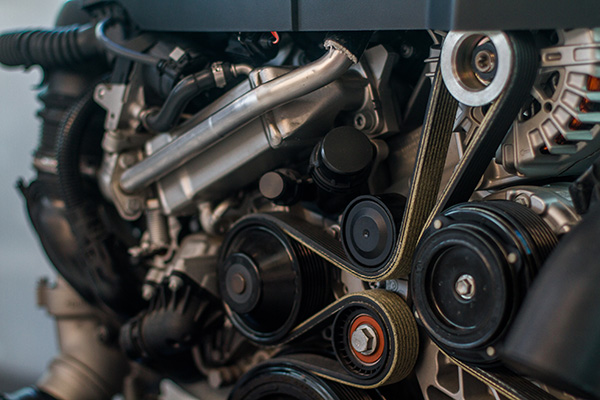
BMW owners often appreciate their vehicles for their performance, engineering, and innovative technologies. Among these is the VANOS system, BMW’s variable valve timing mechanism designed to optimize engine efficiency and performance. However, this component isn’t immune to issues, particularly in models from the mid-1990s to the late 2000s. A malfunctioning VANOS can lead to a range of problems that not only affect your driving experience but could also threaten your engine's lifespan. So, how can you tell if your VANOS is on the fritz?
What Is the VANOS System
BMW’s VANOS system is essentially a variable valve timing unit that adjusts the camshaft position to improve engine performance at different speeds. By optimizing airflow, it enhances power delivery, fuel efficiency, and overall driving dynamics. While it’s a brilliant piece of engineering, its design isn’t flawless, and over time, certain components are prone to failure.
Understanding the symptoms of a failing VANOS can help you address issues early, saving you from costly repairs and potential engine damage.
Symptoms That Indicate a Faulty VANOS
1. Rough Idle or Stalling
A common sign of VANOS trouble is an irregular idle. If your car feels shaky or sputters when idling, this could indicate that the VANOS seals are worn or the system isn’t adjusting the timing properly. In severe cases, you may even experience stalling when coming to a stop.
2. Loss of Power at Low RPMs
Have you noticed your BMW lagging when accelerating from a stop or at low speeds? A failing VANOS unit can cause sluggish performance, particularly at low RPMs. This happens because the variable valve timing isn’t functioning as it should, reducing the engine's ability to produce adequate torque.
3. Reduced Fuel Efficiency
Your VANOS system is designed to optimize fuel consumption, so when it malfunctions, your car’s fuel economy takes a hit. If you find yourself visiting the gas station more often than usual, it could be a sign of worn seals or other VANOS-related issues.
4. Increased Engine Noise
One of the more noticeable symptoms of VANOS failure is an unusually loud engine. You might hear a rattling or ticking noise, particularly during idle or when the engine is cold. This noise often stems from excessive wear in the VANOS unit or issues with the anti-rattle components.
5. Check Engine Light
When the VANOS system fails, your BMW’s engine control unit (ECU) is likely to detect the issue, triggering the check engine light. While a variety of problems can cause this warning, a diagnostic scan revealing timing-related fault codes points directly to the VANOS.
6. Limp Mode Activation
If the VANOS failure is severe, your car might enter limp mode as a protective measure. In this state, engine power is significantly reduced to prevent further damage. While this might get you to your destination, it’s not a condition you want to ignore.
The Impact of Driving with a Faulty VANOS
Ignoring VANOS issues can lead to more significant problems. The symptoms above might seem like minor inconveniences at first, but they can escalate into major engine damage, leaving you with a hefty repair bill. Addressing these symptoms early ensures your BMW stays in peak condition and prevents further complications.
Fixing VANOS Problems
The good news is that VANOS issues are repairable. Professional repair shops, especially those specializing in BMWs, often offer custom VANOS rebuild kits that address the design flaws of the original units. These services typically include:
Replacing VANOS seals
Installing anti-rattle kits to reduce noise
Upgrading internal components for enhanced durability
By opting for a professionally rebuilt VANOS unit, you can restore your BMW’s performance and reliability.
Keep your BMW running at its best. Contact Chicane Motorsport in Olathe, KS, for specialized VANOS services, repairs, and routine maintenance. We’re here to help!